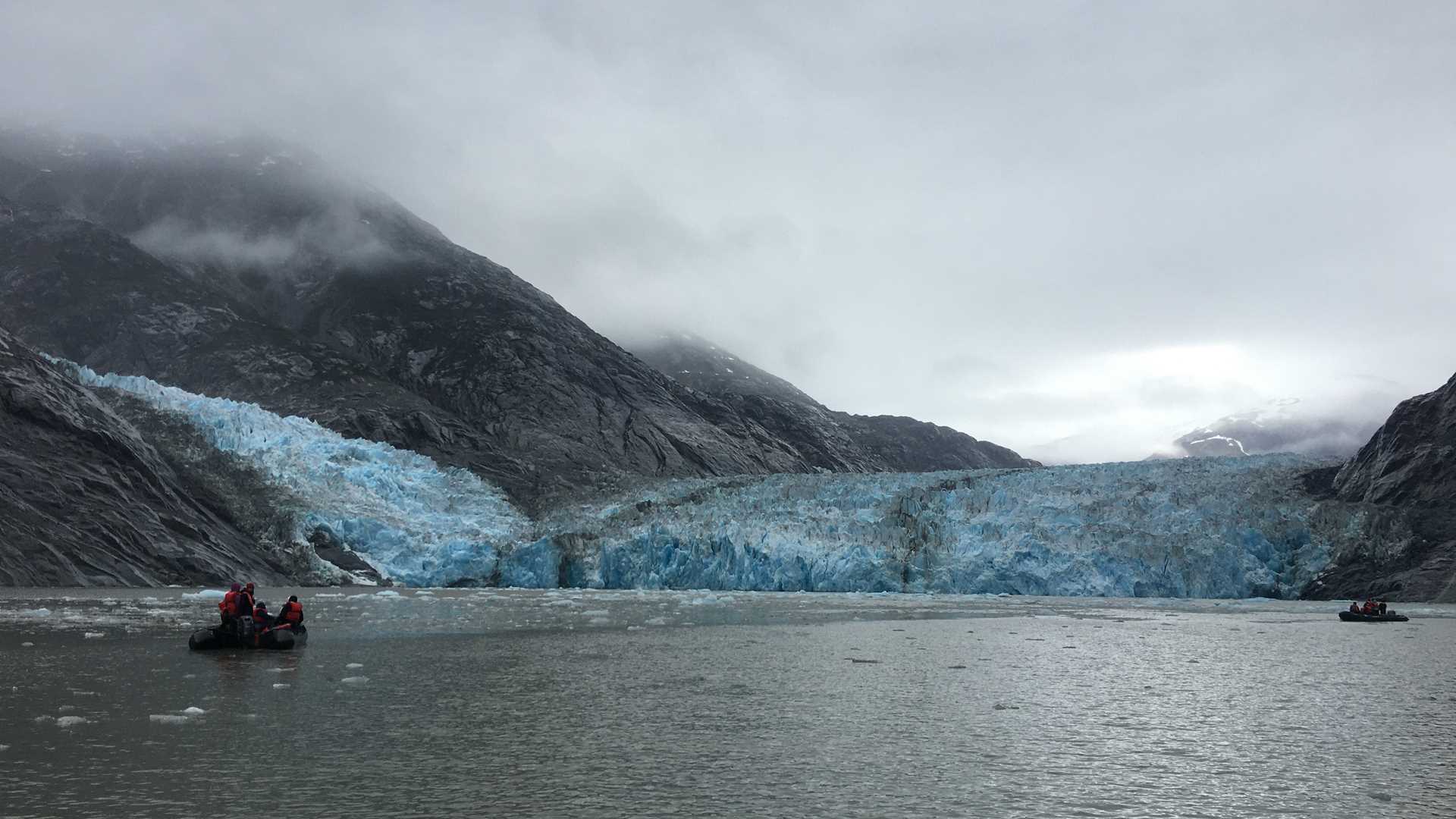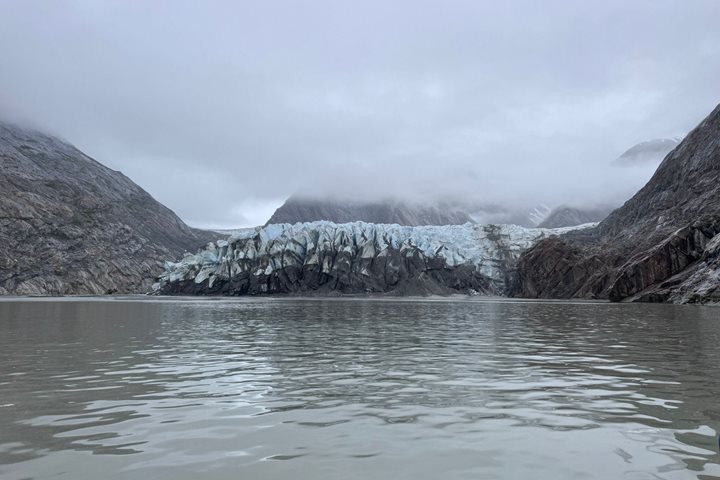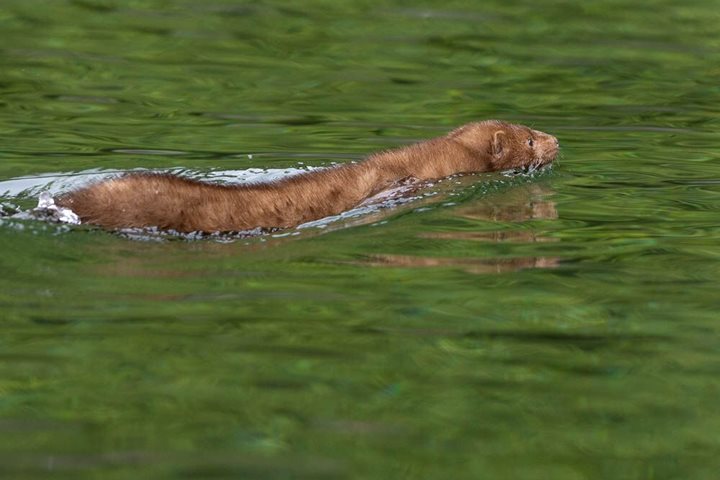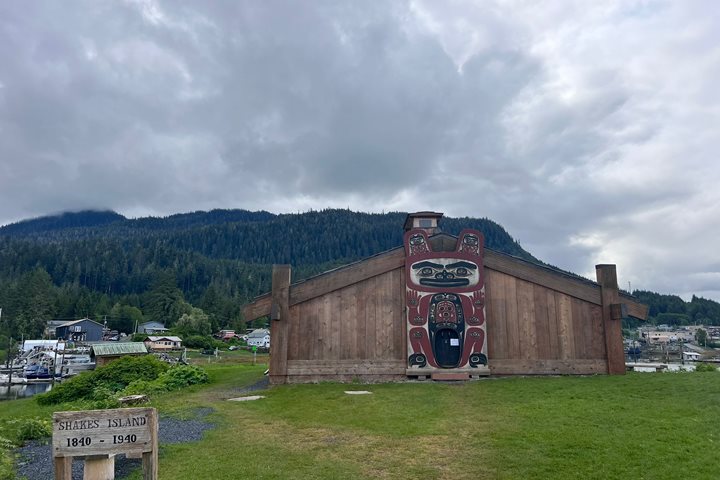We woke up in foggy and rainy Holkham Bay, just as the ship turned into 32-mile-long Endicott Arm, an ancient fjord and currently protected wilderness area, its beauty meant to remain unspoiled. The fog began to slowly clear the further and deeper we went, and in a strange way, it felt like traveling back in time in this spectacular fjord. The fjord walls were covered in spruce and hemlock trees at the mouth of Holkham Bay, but the deeper we went, the less vegetation we saw and the more exposed granites, gneiss, and marble rock faces we saw. We were witnessing the landscape being reborn: many more thousands of years had passed since the entrance of the fjord was covered with a glacier, and therefore, more time had allowed for soils and more mature forests to form. Further back in, with less time since the end of the last ice age, rocks had less time exposed to the elements, and less time to form soil and allow for vegetation to grow.
Our anticipation continued to grow as we watched glacial floes and bergy bits grow bigger and more numerous during the ship’s approach while we had our breakfast. And all of a sudden, we saw Dawes Glacier in the distance, majestic and climbing as far back into the mountains as the eye could see (and as far back as the rain and mist would allow us to see). Our intrepid explorers jumped into the boats to explore the front face of the glacier and were not disappointed. We saw spectacular blue colors, and pillars, and crevasses, and tried to guess how high those ice towers could be and imagined mountaineering across those landscapes. We listened to the thundering, and just as we held our breath after another thunder from the glacial face, a gigantic ice tower broke off, crashed into the water, and sent waves half a mile away that gave us a mini rollercoaster ride. After this incredibly beautiful tour in the morning, we had some brave souls who decided to jump in for a Polar Plunge! We salute them all for their icy courage!







